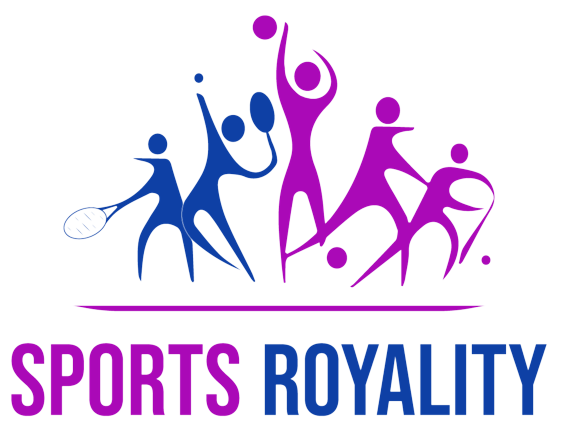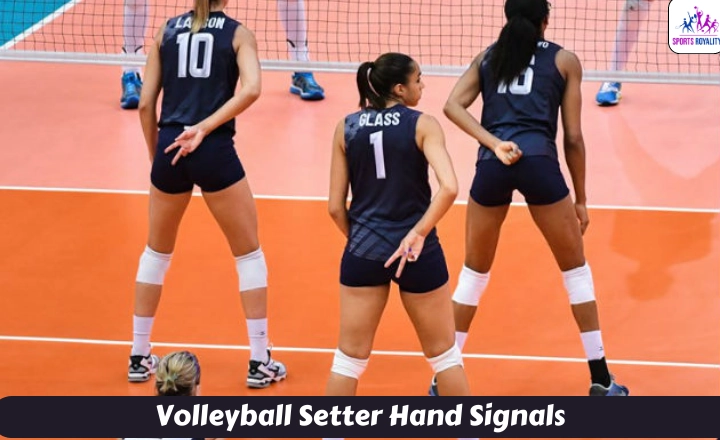Volleyball, a fast-paced and exhilarating sport, requires seamless coordination among team members to achieve victory. Within this dynamic environment, the setter plays a crucial role in orchestrating the team’s offensive strategies. Communication on the court can be challenging amidst the chaos of spikes and dives. That’s where volleyball setter hand signals come into play an intricate system of gestures that allow setters to convey specific instructions to their teammates without uttering a single word.
We will delve deep into the world of volleyball setter hand signals, unraveling their meanings and exploring how they contribute to the success of a team on the court. So grab your imaginary whistle and join us on this journey through the silent language of setters!
Left Side Attack Hand Signals
In the fast-paced world of sports, communication is key. With split-second decisions capable of changing the course of a game, athletes rely on well-established hand signals to convey valuable information to their teammates.
The left side attack hand signals are crucial in volleyball, as they help create a seamless coordination between the setter and the outside hitter .
4 Signal Means-Volleyball Setter Hand Signals
One such signal, often employed in the game of volleyball, is the four fingers held up on the left side attack. This simple gesture speaks volumes and serves as a strategic move that can give teams an edge over their opponents.
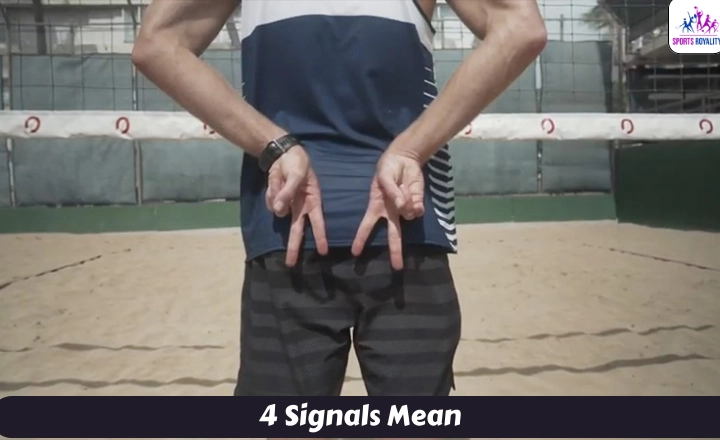
When a player hastily holds up four fingers on their left hand during a volleyball match, it sends a clear message to their teammates: prepare for an attack from the left side. This signal not only alerts players but also initiates a synchronized set-up required for executing swift offensive plays. The beauty lies in its simplicity; just four fingers can ignite an unstoppable wave of coordinated action among team members.
Holding up four fingers isn’t restricted solely to its literal interpretation in volleyball; it transcends boundaries and becomes symbolic of unity within a team. It represents trust and understanding among athletes who have trained relentlessly together, allowing each individual to anticipate and respond accordingly when they see those four formidable digits raised high in the air.
It is as though each finger embodies a different aspect crucial to achieving victory: strength, strategy, determination, and teamwork – forming an unbreakable bond between teammates that drives them towards success.
Hut signal Mean:
Left side attack hand signal commonly referred to as Hut. This simple yet impactful gesture involves making a slashing motion across your chest. When communication needs to be quick and efficient, this gesture allows players to convey vital information without uttering a single word.
What makes the Hut signal so captivating is its universality across various sports. From football and basketball to volleyball and hockey, players understand the meaning behind this distinctive movement.
It signifies an imminent attack from the left side, prompting teammates to anticipate, react quickly, and adjust their positions accordingly. Regardless of where you’re from or which team you play for, a slash across the chest speaks volumes. This nonverbal language enables players from diverse backgrounds to communicate effectively on the field or court, ultimately enhancing their teamwork and performance.
Go Signal Mean:
The most intriguing hand signals in martial arts is the Go A go gesture, where you make a gun symbol with your index and middle fingers and thumb. This unique movement holds immense significance during combat situations, particularly in left-side attack hand signals.
The use of Go A go not only serves as a visual signal to your teammates but also adds an element of psychological warfare to the fight. It forces your opponents to analyze and decipher your next move while keeping them on edge. This hand gesture is a silent communication that can be understood by those trained in tactical maneuvers, creating cohesion among team members.
Go A go acts as an empowering tool that allows fighters to outsmart their adversaries by utilizing nonverbal cues effectively. By incorporating subtle yet powerful gestures like these into their techniques repertoire, martial artists bring an innovative approach to battle that keeps opponents guessing at every turn.
32/Rip signal Mean:
The 32 rip this signal, marked by an arch with your hand, is a quick and powerful way to communicate a specific play or strategy. Whether you’re on the court or watching from the sidelines, this captivating maneuver catches the eye and sparks curiosity. The 32 rip is not just shorter in length but also faster in execution compared to other hand signals. Its brevity allows players to swiftly convey their intentions without wasting precious seconds.
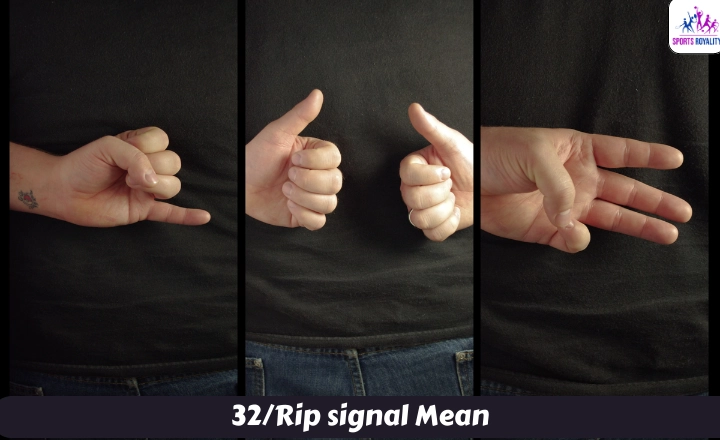
It creates a seamless flow of communication among teammates, enabling them to coordinate their movements effectively and stay one step ahead of their opponents. This intriguing motion adds an element of excitement and intrigue to the game. Spectators often find themselves captivated by the synergy between players as they seamlessly execute intricate strategies using hand signals like the 32 rip.
It’s a visual representation of teamwork and dynamic game play that keeps fans on the edge of their seats, eagerly anticipating each move.
A (Back Row Attack)
Its commonly indicated by drawing a line over your upper chest near your right shoulder also known as an A hand signal. While many players are familiar with traditional left side attacks, incorporating this technique can bring a fresh dynamic to the game.
The A hand signal signifies that the setter will send the ball towards the back row attacker on the left side of the court. This unexpected maneuver catches opponents off guard and opens up new possibilities for scoring points. By utilizing this tactic strategically and at unpredictable moments, teams can keep their adversaries guessing and gain a competitive advantage.
Implementing left side attack hand signals may seem like a small adjustment, but it can have significant implications on team dynamics and coordination. It requires precise communication between players and demands quick reflexes from both setters and attackers alike. Integrating back row attacks enables teams to diversify their offensive strategies, creating thrilling moments that captivate fans and elevate game play to new heights.
Right Side Attack Hand Signals
Right Side Attack Hand Signals are a crucial aspect of tactical communication for military forces and law enforcement agencies. These signals not only enhance coordination and effectiveness during an operation but also mitigate risks and ensure the success of the mission. A solid understanding of these hand signals is essential for any team operating in potentially dangerous environments.
Back 2 signal
Right Side Attack Hand Signals or Back 2 The Back 2 is a powerful and effective communication technique used by athletes, particularly in team sports such as basketball. This hand signal, formed by holding up the pinky and ring finger, serves as a secret code for initiating tactical plays on the right side of the court. It enables players to anticipate and execute precise movements without verbally communicating their intentions to the opponents.
The Back 2 hand signal not only enhances coordination but also fosters a sense of unity among teammates. It allows them to communicate silently and efficiently while keeping their opponents guessing about their next move. This non-verbal language speaks volumes about the level of understanding that exists within successful teams, demonstrating how body language can be just as powerful as spoken words in achieving common goals.
Signal 5 Mean
One such hand signal is the 5, which is indicated by holding up all five fingers. This signal signifies a high ball set out to the sticks on the right side of the court. It is a powerful and aggressive play that requires precision and coordination. When executed effectively, the 5 can catch opponents off-guard and create opportunities for scoring points. The high ball set allows the right side attacker to approach with speed and power, aiming to terminate it with a forceful spike that is difficult for defenders to handle.
This tactic may be used strategically during crucial moments in a match when a team needs to regain momentum or turn the game around. Proper communication between teammates is key when using hand signals like the 5. Misunderstandings can lead to mistimed jumps or missed chances at scoring points. Teams must ensure their signal system is well-practiced and understood by all players.
Red signal Mean
To execute a red play, a player simply makes a closed fist with their right hand. The beauty of the red is its ability to completely change the tempo and rhythm of a match. It operates as a lower, faster variation of a 5 attack, catching opponents off guard and disrupting their defensive Players formation.
The red not only adds excitement to the game but also requires quick thinking and adaptability from both attackers and setters. It allows for unexpected variations in offensive tactics that can easily confuse even the most seasoned defenders. Masters of this maneuver can make it seem effortless, seamlessly blending power and precision in each execution. By incorporating hand signals like the red into your team’s arsenal of tactics, you open up new avenues for strategic play that keep your opponents guessing.
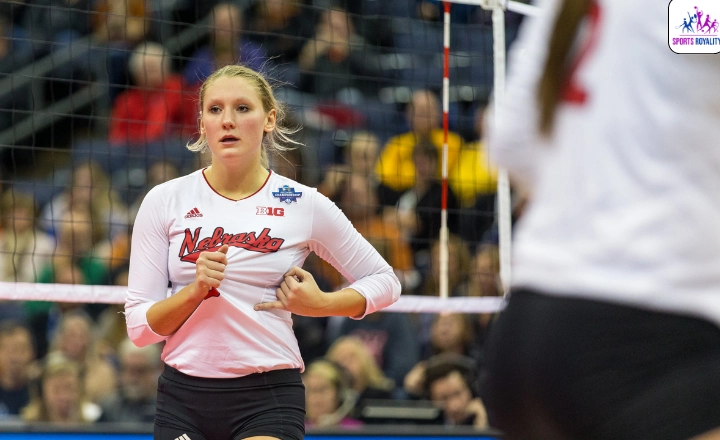
D (Back Row Attack)
The D (Back Row Attack) is one such powerful move that relies heavily on accurate signaling. To execute this maneuver, a line drawn over your upper chest near your left shoulder indicates to the setter that you are ready for a back row attack. This signal allows the setter to make an informed decision on how to position themselves and deliver a well-timed set. It guides other players on the court to create spaces and clear pathways for an impactful play.
Mastering right side attack hand signals helps teams function as one cohesive unit, providing them with an edge over their adversaries during high-pressure moments in matches. It not only facilitates seamless execution of complex strategies but also ensures efficient utilization of each player’s skills and abilities.
Middle Attack Hand Signals
Middle Attack Hand Signals are a crucial part of communication in sports such as volleyball and basketball. These signals allow players to quickly convey their intentions and strategies to their teammates, without giving away valuable information to the opposing team.
Signal 1 Mean
One such signal is the 1 sign, representing a quick set to the middle blocker positioned in front of or close to the setter. By using this simple but powerful signal, teams can swiftly coordinate an explosive middle attack that catches opponents off guard. It not only allows for speedy execution but also creates confusion among defenders who scramble to adjust their positioning on short notice. This gives the attacking team a significant advantage as they can exploit gaps left open by hurried blockers.
By using non-verbal cues like holding up one finger, players can communicate their intentions without giving away any hints to their opponents’ defensive strategies. The element of surprise adds an exciting element of unpredictability that keeps both players and spectators at the edge of their seats throughout intense matches.
Signal Push 1Mean
Signal that often sparks curiosity and intrigue is the push 1. Unlike the traditional setting gestures, a push 1 is indicated by flexing the index finger slightly off center in a quick set motion. This subtle variation brings about an unexpected twist to middle attack strategies. By shifting the finger to the left, farther away from a conventional 1 gesture, players can manipulate their colleagues’ perception on court. This seemingly minor adjustment allows for greater flexibility in offensive maneuvers, catching opponents off guard and leading to effective scoring opportunities.
The element of surprise becomes a significant weapon as middle blockers scramble to react to this unforeseen style of play. Utilizing the push 1 technique not only disrupts opponents’ defensive plans but also showcases a team’s versatility and adaptability on court. By incorporating unconventional hand signals into their repertoire, players demonstrate intelligence and innovative thinking during gameplay. This creative approach adds an extra layer of excitement and unpredictability to every match, keeping both fans and competitors on their toes.
Signal 3/Shoot Mean
When a player holds up three fingers or creates a gun symbol with their index finger and thumb, it indicates that they are calling for a middle attacker to be set up for an attack at the net.
This hand signal brings an element of surprise to the game, catching the opposing team off guard. The middle attacker becomes a secret weapon, tucked between blockers who may be focused on outside hitters or backcourt defenders.
It requires quick execution and precise timing to successfully pull off a 3 shoot play. This signal opens up avenues for creative plays and strategic moves that keep both teams guessing during intense moments in a match. The beauty of using hand signals like these lies not only in their functional purpose but also in how they contribute to team dynamics.
Signal Back 1Mean
Indicated by holding up your pinky finger, this signal communicates a play where the setter will deliver a quick set behind them to the middle attacker. The back 1 is more than just a gesture; it represents a coordinated and well-executed play that requires precise timing and communication between the setter and middle attacker. As soon as the setter receives a pass or dig close to their position, they quickly release a perfectly positioned set towards their backside, catching both defenders and blockers off guard.
The element of surprise created by this quick maneuver opens up new attacking angles for the middle hitter, making it harder for opponents to defend against. Not only does the back 1 offer tactical advantages on offense, but it also provides an opportunity for players to showcase their teamwork and coordination. The timing between the setter’s release of the ball and the middle attacker’s approach has to be seamless in order for this play to succeed.
Slide Signal Mean
The slide play is an offensive tactic that involves the middle blocker attacking from behind and near the setter. The timing and execution of this play can catch opponents off guard, making it a valuable weapon in a team’s arsenal. To communicate their intent for a slide play, players usually make a shaka sign with their hand, forming a hang loose gesture by extending the thumb and pinky finger while curling the other fingers.
By utilizing these unique hand gestures as indicators for slides, teams not only maintain secrecy about their plays but also enhance coordination on the court. This non-verbal method allows for quick communication without alerting opponents to what is about to happen next. It adds an element of surprise and keeps opposing blockers guessing, making it harder for them to effectively defend against powerful middle attacks.
Signal 2 Mean
A 2 is indicated by holding up 2 fingers as a hand signal in volleyball. This signifies a high ball set to the front middle of the court, usually aimed at the middle blocker. The purpose of this attack is to confuse the opposing team’s blocking formation and create opportunities for scoring points.
There is also a lower and quicker version of this attack known as a quick slide.
Instead of holding up two fingers, the setter indicates this play by rapidly crossing their arm across their chest. The quick slide involves a faster approach from the hitter and requires split-second timing between the setter and hitter. It can catch opposing blockers off guard due to its speed and effectiveness when executed correctly.
Pipe (Back Row Attack)
The pipe, also known as a middle attack, is a powerful offensive weapon in the world of volleyball. It involves the back row player attacking through the center of the court, taking advantage of gaps in the opposing team’s defense. Not only does this require incredible timing and accuracy from both the setter and attacker, but it also demands strong communication through hand signals.
One interesting aspect about the pipe attack is its ability to surprise opponents. Unlike typical attacks that happen at different angles or sides, the pipe comes straight down through unexpected regions of defense. This element of surprise makes it challenging for defenders to anticipate and react quickly enough to block or dig it effectively. The potential for scoring points with pipes lies in exploiting gaps within defenses before they have time to adjust their positioning an opportunity that skilled teams are quick to capitalize on.
B (Back Row Attack)
The back row attack, also known as a B in volleyball, is an essential play in the game. To execute it successfully, communication is key. One way players can communicate their intentions for a back row attack is through middle attack hand signals. By drawing a line down the middle of your right chest muscle, you indicate to your teammates that you are planning to make a powerful hit from the back row.
This hand signal serves as an effective tool for players to communicate quickly and efficiently during intense moments of gameplay. The line drawn down the chest not only captures the attention of your teammates but also provides them with valuable information about your attacking strategy. As they see this signal, they know exactly where you plan to direct your hit and can adjust their positioning accordingly.
C (Back Row Attack)
When it comes to middle attack hand signals, the C or commonly known as the Back Row Attack, holds a significant role in volleyball. This particular signal is indicated by drawing a line down the middle of your left chest muscle, separating it from where you would signal a D. While many may overlook its importance on the court, the C can turn out to be a game-changer if executed correctly.
The beauty of the C lies in its ability to catch opponents off guard. Since this attack originates from behind the ten-foot line, it often catches blockers and defenders off balance, offering a narrow window for timely reactions. The element of surprise becomes an invaluable asset for teams utilizing this tactic effectively. With proper positioning and timing by both setter and hitter, the back-row attacker can exploit gaps in the opposing team’s defense and deliver powerful strikes.
Back Row Quick Attack (BIC)
An elements in successfully executing a back row quick attack (BIC) is effective communication between the setter and middle hitter. Hand signals play a crucial role in conveying the desired play, allowing for quick adjustments and precise timing. These signals provide an efficient way for the setter to communicate with the hitter without having to rely on verbal cues, which can be easily intercepted by the opposing team.
When it comes to BICs, middle attack hand signals are especially important. The middle hitter needs to be able to read and understand these signals quickly in order to adjust their approach and prepare for the attack. This requires a high level of trust and familiarity between the setter and middle hitter, as they need to synchronize their movements seamlessly to maximize the effectiveness of this fast-paced play.
Middle attack hand signals also allow for variations in tempo and direction during a BIC. By using different hand signals, such as a low or high signal, setters can dictate whether they want the ball set closer or farther away from the net. This adds an element of surprise to the play, making it more difficult for blockers on the opposing side to anticipate where exactly the ball will be attacked from.
Combination Play Hand Signals
The most effective techniques used by setters in volleyball is combination play, where attackers run unorthodox attacks around a condensed space. To execute these plays successfully, setters rely on middle attack hand signals to communicate the desired movement to their teammates. These hand signals act as a secret language between the setter and middle hitters, allowing them to coordinate their actions without giving away their plans to the opposing team.
The beauty of combination plays lies in their unpredictability.
By incorporating different angles and timing into their attacks, teams can catch their opponents off guard and create scoring opportunities. Using specific hand signals for each type of combination play ensures that all players are on the same page and can execute the play seamlessly. From quick combinations to slides and tandems, each signal represents a specific pattern or movement that will lead to an unconventional attack.
X Combo Attack-Volleyball Setter Hand Signals
The X Combo Attack stands out as one of the most thrilling and strategic moves. This play involves intertwining your index and middle fingers over one another a simple yet powerful hand signal that can completely change the game. The X combo attack serves as a means to confuse opponents and create openings in their defense. By performing this move, you are essentially creating an illusion, making it difficult for defenders to predict your next move.
As you execute this play, your crossed fingers act as visual misdirection, forcing opponents to second-guess where exactly you intend to strike. It not only provides an element of surprise but also puts pressure on the defending team’s setter, who must quickly assess his or her options while accounting for potential decoys.
Double Quick Combo Attack
This move involves holding up your index and pinky fingers, symbolizing speed and precision. What makes the double quick combo so effective is its ability to catch opponents off guard. The rapid movement of these two fingers can confuse and distract, creating opportunities for follow-up attacks. By employing this technique, fighters can exploit their opponents’ weaknesses and leave them with little time to react or defend themselves.
The double quick combo allows for seamless transitions between different strikes. It provides a fluidity in movements that helps maintain rhythm and momentum during an altercation. With practice, fighters can seamlessly switch between techniques like jabs, hooks, or uppercuts without losing their balance or compromising their defense.
How Do Setters Communicate To Spikers?
Effective communication between setters and spikers is crucial for a successful attack. There is often a dilemma – how can setters communicate their intended attack to the spikers without giving away their plans to the opposing team? One solution lies in non-verbal cues and signals. Setters have developed an intricate system of hand signals and body language to discreetly convey their intentions to the spikers. A slight tap on the forehead might indicate a quick attack, while a downward swipe could signal a powerful spike.
These subtle gestures not only keep the opposing team guessing but also allow setters to adapt their plans in real-time based on the defensive formation. Eye contact plays an essential role in setter-spiker communication. By locking eyes with each other before a play starts, they establish an unspoken understanding that allows them to synchronize their movements effortlessly. This connection transcends words and empowers both players to anticipate each other’s actions intuitively, fooling blockers into making errors and creating scoring opportunities.
Through these non-verbal methods of communication, setters not only maintain secrecy but also foster trust and synergy with their spikers. This silent conversation built on trust becomes even more critical during high-pressure situations as it enables them to execute plays flawlessly without tipping off the opposition.
Why Do Volleyball Players Hold Fingers Behind Their Back?
One intriguing tactic utilized by skilled volleyball setters is the use of hand signals hidden behind a teammate’s back. This clandestine technique allows the setter to communicate with their spikers while concealing their intentions from the opposing team. By positioning a teammate as a shield, these setters can ensure that only their own spikers have access to their strategic instructions.
This covert approach provides a significant advantage for the attacking team. It not only confuses and misleads the opponents but also enhances communication within the attacking unit. The reliance on secret signals fosters stronger teamwork and cohesion, as spikers become more attuned to the setter’s subtle gestures. This tactical innovation has become an integral skill in top-level volleyball competitions.
Employing a teammate as a shield heightens both anticipation and excitement for spectators. As they witness these intricate displays of coordination, fans are brought closer to understanding the complex dynamics at play during high-level volleyball matches. It adds an element of intrigue and strategy that elevates the sport beyond mere physical prowess, captivating viewers with its intellectual nuance and artistry.
These Setter Hand Signals Are Not Universal!
Growing up playing volleyball in Australia, I quickly learned that our setter hand signals are not universal. While other countries may have a standard set of signals for different sets such as the quick, high ball, or back set, we Australians seem to have developed our own unique system. It’s almost like a secret code only decipherable to those who grew up playing here.
One of the main reasons behind this divergence seems to be the different terminology we use for each set. For example, what some people might call a quick set is known as a bic down under. This variation in language naturally led to the creation of different hand signals to convey these specific sets. It’s fascinating how something as seemingly small as naming conventions can shape an entire communication system within a sport.
It can sometimes cause confusion and miscommunication when playing with players from other countries who expect certain hand signals for specific sets. But rather than seeing it as a hindrance, I embrace these differences as an opportunity to learn and adapt. It makes me appreciate the beauty of diversity in volleyball techniques and serves as a reminder that there isn’t just one right way to play the game. If everyone played exactly the same way, volleyball would lose much of its excitement and charm.
So next time you step onto an international court and encounter unfamiliar setter hand signals, remember that diversity is what keeps this sport alive and exhilarating!
Conclusion
Volleyball setter hand signals are an essential part of effective communication on the court. These signals allow setters to quickly and discreetly communicate with their teammates, ensuring that everyone is on the same page and able to execute plays effectively. By learning and using these hand signals, teams can improve their overall performance and increase their chances of success. Whether you’re a setter looking to enhance your skills or a teammate wanting to better understand the game, taking the time to learn these signals will undoubtedly benefit your team. So start practicing today and watch as your team’s coordination and performance soar!
FAQs
Can anyone understand volleyball setter hand signals?
While some basic hand signals may be more commonly known, understanding specific volleyball setter hand signals typically requires experience and familiarity with the team’s system. It may take time for new players to fully grasp all the different meanings.
How can I learn volleyball setter hand signals?
To learn volleyball setter hand signals, it is best to join a team or training program where experienced coaches can teach you the specific signs used within that system. Practicing with your teammates will help reinforce your understanding and recognition of these cues.
